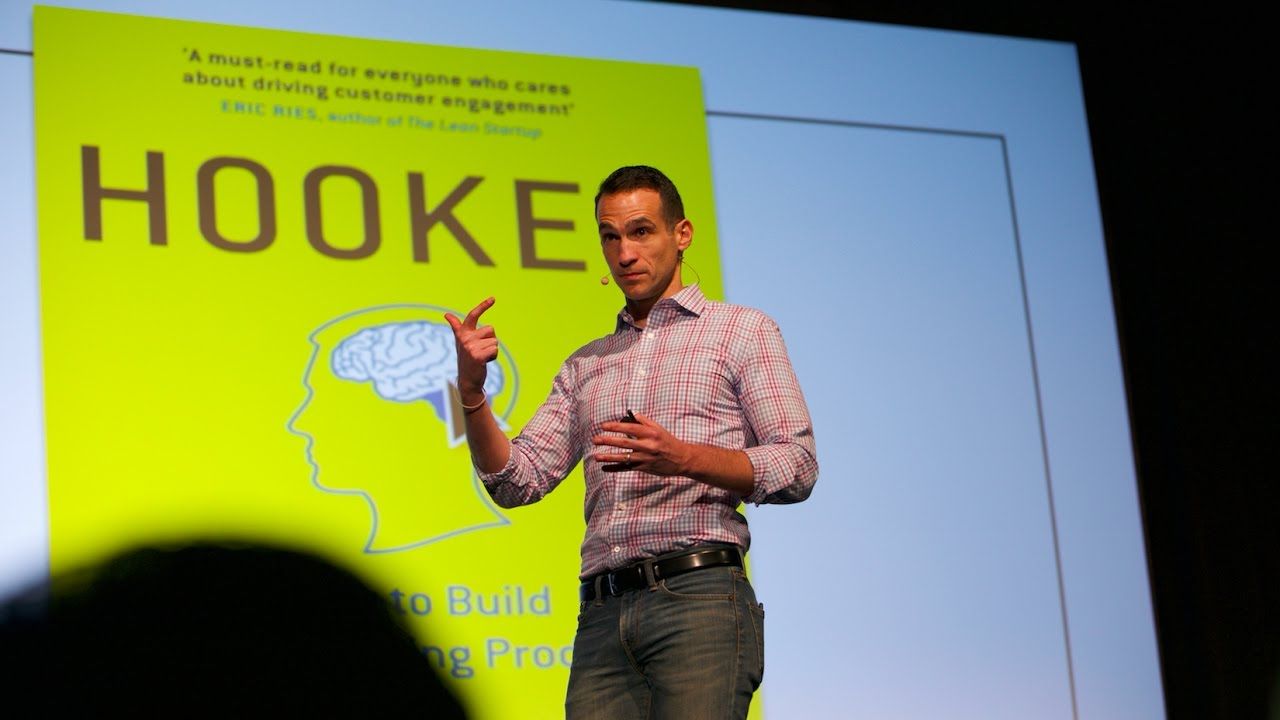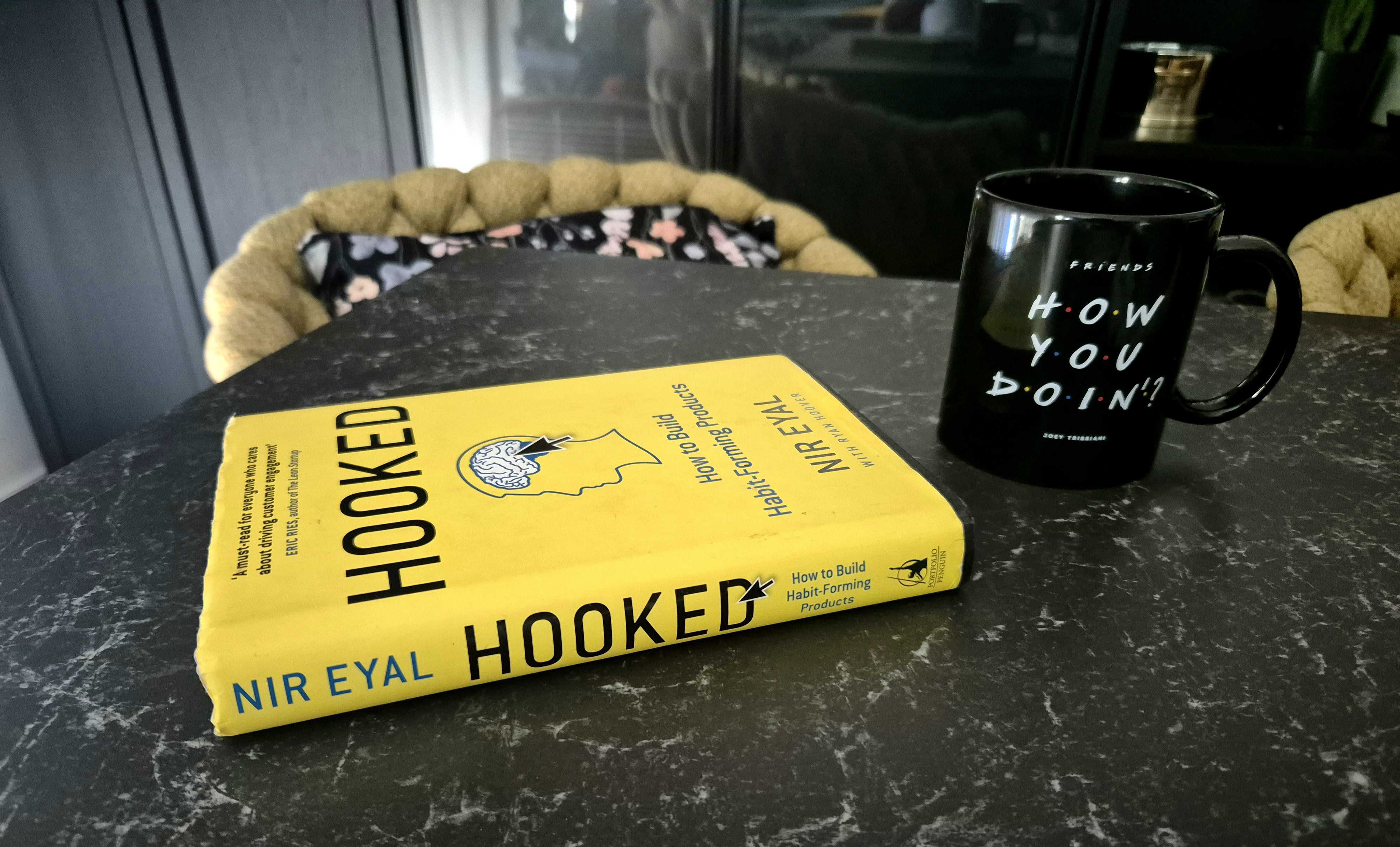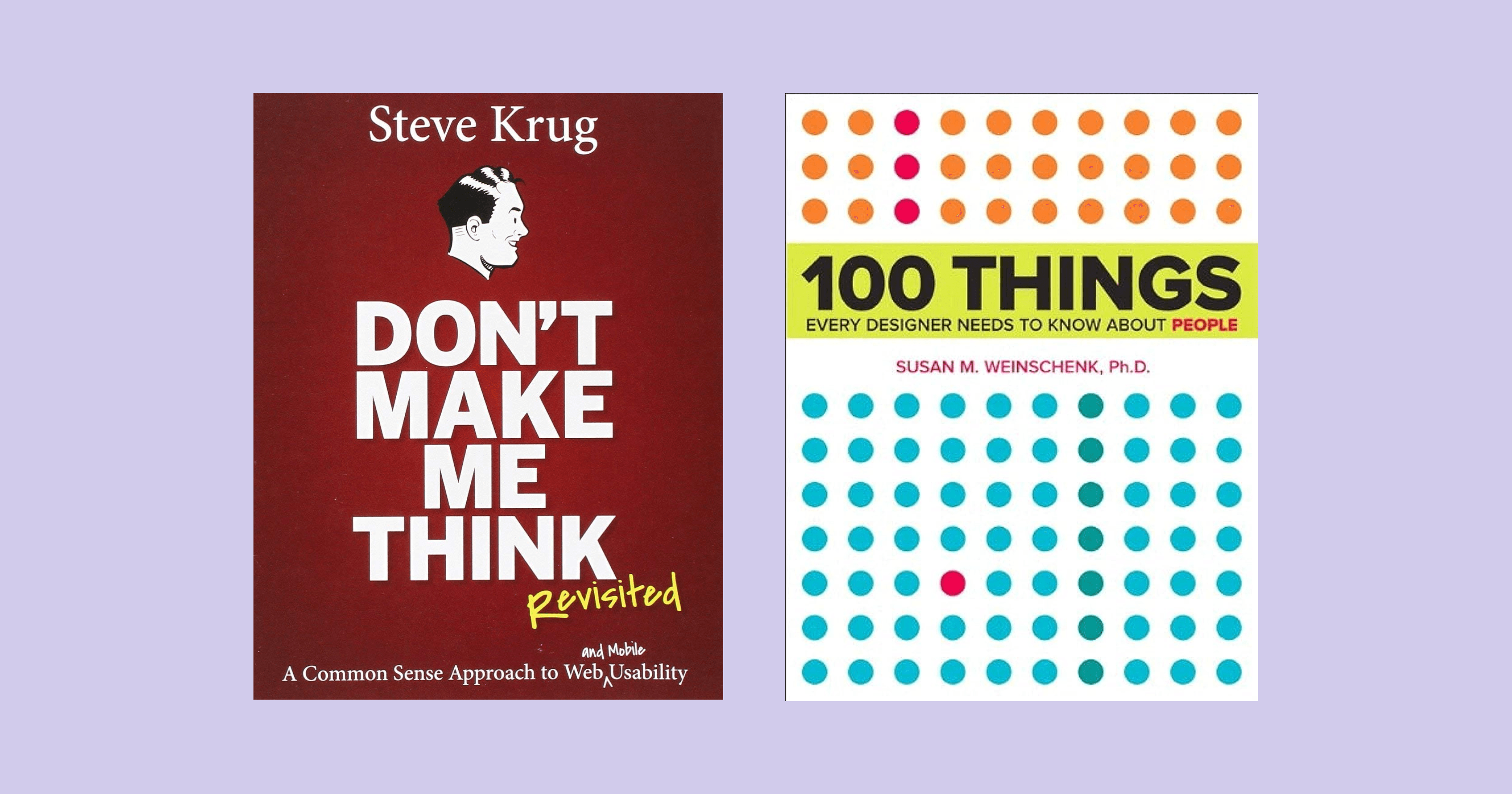The Design Book Club Book #2: "Hooked: How to Build Habit-Forming Products" by Nir Eyal
AuthorPaula Grubiša
DateJun 17, 2024
In "Hooked," Nir Eyal delves into the secrets of building habit-forming products that captivate users and keep them coming back for more. From social media platforms to fitness apps, Eyal examines the techniques used by leading companies to create products that become integral parts of our daily routines.
This book is a practical guide that delves into the psychology of why some products capture widespread attention and others do not — Eyal introduces the "Hook Model," a four-step process comprising triggers, actions, variable rewards, and investment, which companies can utilize to create products that keep users coming back. By combining scientific research with practical examples, the author illustrates how businesses can create products that not only capture attention but also become an integral part of users' daily routines.

“Hooked” is particularly valuable for product designers, marketers, and entrepreneurs aiming to build products that foster long-term user engagement, and it also covers ethical considerations of creating habit-forming products, and urging creators to design responsibly.
Nir Eyal is an accomplished author, lecturer, and behavioral design expert with a background in psychology and business. He has taught at prestigious institutions like Stanford Graduate School of Business and the Hasso Plattner Institute of Design. Eyal’s work focuses on the intersection of technology, psychology, and business, exploring how products can shape user behavior, and he’s known for his ability to distill complex psychological concepts into actionable strategies for businesses. Beyond "Hooked," Eyal continues to write and speak about the impact of technology on behavior and how to use this knowledge ethically.
"Hooked: How to Build Habit-Forming Products" by Nir Eyal
Whether you're a seasoned designer, an aspiring entrepreneur, or simply curious about the forces that drive consumer behavior, "Hooked" offers valuable insights and actionable strategies for designing products that users can't resist.
CHAPTER 1: The Habit Zone
Eyal begins by defining what habits are and why they are essential for product success. He introduces the "Habit Zone," a concept that describes the sweet spot where a product is used frequently and becomes a habitual part of users' lives. This chapter emphasizes the economic value of creating habit-forming products, noting that habits can lead to increased customer lifetime value and competitive advantage. Eyal sets the groundwork for the Hook Model by explaining how understanding user habits can inform product design and highlights the importance of identifying users' needs and designing products that seamlessly integrate into their daily routines.
LESSONS LEARNED:
- Prioritize habit formation — design products that can integrate seamlessly into users' daily routines to create lasting habits.
- Identify user needs — understand the core needs and pain points of users to ensure your product becomes essential in their lives.
- Aim for frequency — ensure your product is used frequently enough to form a habit by offering continuous value.
CHAPTER 2: Trigger
In this chapter, Eyal delves into the first step of the Hook Model: triggers, which initiate user actions. He explains the difference between external triggers, such as notifications and advertisements, and internal triggers, like emotions and routines that drive behavior from within. The chapter highlights the importance of understanding and leveraging these triggers to create a habit-forming product — Eyal provides insights on how to design effective triggers that prompt users to take the desired action at the right time, and also discusses the psychological underpinnings of triggers, emphasizing their role in connecting users' needs with the product's solutions.

LESSONS LEARNED:
- Design effective triggers — use well-timed notifications and reminders to prompt user engagement.
- Leverage emotions — identify internal triggers, such as users' emotions, to create a deeper connection with your product.
- Seamless integration — make triggers feel natural and unobtrusive within the user experience.
CHAPTER 3: Action
Eyal explores the second step of the Hook Model: action, which is the behavior performed in anticipation of a reward. He introduces the Fogg Behavior Model, which posits that behavior occurs when motivation, ability, and a trigger converge simultaneously. The chapter discusses strategies to enhance user motivation, such as appealing to users' desires and aspirations, and ways to simplify the action to reduce friction. Eyal illustrates these concepts with real-world examples, showing how successful companies design interfaces that make it easy for users to take action, and he also emphasizes the importance of continually testing and refining the product to ensure the action is as seamless as possible.
LESSONS LEARNED:
- Simplify actions — design interfaces that reduce friction and make the desired action easy to perform.
- Enhance motivation — use design elements that boost user motivation through compelling visuals and messages.
- Test and refine — continuously test the user experience to ensure actions are intuitive and straightforward.
CHAPTER 4: Variable Reward
The third step in the Hook Model is variable rewards, which keep users engaged by providing unpredictable and novel outcomes. Eyal explains that variable rewards are more effective than fixed rewards because they trigger the brain's craving for uncertainty and surprise. He categorizes variable rewards into three types: rewards of the tribe (social rewards), rewards of the hunt (material rewards), and rewards of the self (intrinsic rewards). The chapter discusses how to incorporate these rewards into products to maintain user interest and encourage repeated use, providing examples from various industries, and demonstrating how companies successfully use variable rewards to create compelling user experiences.
LESSONS LEARNED:
- Use variable rewards — incorporate unpredictable rewards to keep users engaged and coming back.
- Diversify rewards — offer different types of rewards (social, material, and intrinsic) to appeal to various motivations.
- Balance rewards — ensure rewards are meaningful and aligned with user expectations to avoid frustration.
CHAPTER 5: Investment
Eyal details the final step of the Hook Model: investment, where users invest time, effort, data, or money into a product, increasing their commitment to it. He explains that these investments enhance the product's value and make users more likely to return, creating a cycle of habitual use. The chapter highlights different forms of user investment, such as personalizing the product, contributing content, or inviting friends. Eyal stresses the importance of designing products that offer users opportunities to invest, thereby increasing their attachment to the product, and he also discusses the psychological effects of investment, such as the endowment effect, which makes users value the product more highly.
LESSONS LEARNED:
- Encourage investment — design features that prompt users to invest time, effort, or data, increasing their commitment.
- Personalize experiences — allow users to personalize their experience, fostering a sense of ownership.
- Incremental investment — provide ongoing opportunities for users to invest, deepening their attachment to the product.
CHAPTER 6: What Are You Going to Do with This?
In this practical chapter, Eyal offers advice on how to apply the Hook Model to real-world products. He provides case studies of companies that have successfully implemented these principles to create habit-forming products and includes a series of questions and exercises designed to help readers analyze and improve their own products using the Hook Model framework. He emphasizes the importance of testing hypotheses, gathering user feedback, and iterating on product design to enhance user engagement. The chapter also encourages readers to think ethically about their use of habit-forming techniques, considering the potential impact on users' well-being.
LESSONS LEARNED:
- Apply the Hook Model — use the Hook Model systematically to analyze and improve your product's engagement.
- Iterate based on feedback — regularly test and refine your design based on user feedback to enhance habit formation.
- Ethical considerations — design responsibly, aiming to create products that improve users' lives rather than exploiting them.
Eyal wraps up the book by summarizing the key points and reiterating the importance of the Hook Model in creating habit-forming products, and discusses the ethical implications of using these techniques, urging creators to design products that improve users' lives rather than exploit them. He also highlights the potential for habit-forming products to make positive changes in users' behavior and lives — the conclusion serves as a call to action, inspiring readers to use the knowledge gained from the book to create meaningful and beneficial products.
And that's it folks! I covered all the chapters in the book and gathered the most valuable lessons from each one, but I also have something extra, and that is — top quotes from “Hooked”!

Top quotes from "Hooked: How to Build Habit-Forming Products" by Nir Eyal
1. "Successful innovations become so ubiquitous that we forget the world once lived without them. Creating habits is an important part of making these innovations successful. In fact, products that change customer routines and create unprompted user engagement have a distinct competitive advantage."
2. "For many products, forming habits is a critical component to success, but it's not always necessary. Sometimes it's more about encouraging the right behavior when it matters most. The Hook Model can help you understand and design for these behaviors."
3. "Variable rewards are one of the most powerful tools companies can use to hook users. Providing a varied set of rewards keeps users engaged by maintaining a sense of novelty and unpredictability, which stimulates the brain's reward system."
4. "Investment in a product creates an implicit commitment for the user. When users invest time, effort, or money, they are more likely to continue using the product because they have skin in the game. This investment phase increases the likelihood of the next pass through the Hook Model."
5. "To create effective external triggers, product designers must identify where and when they want to reach users. It’s not enough to just send notifications; they must be timely, relevant, and aligned with the user's context and needs."
6. "Creating user habits isn't just about frequency; it’s about creating an emotional attachment. By connecting to the user's internal triggers, successful products not only meet needs but also create a desire to use the product as part of a routine, often without conscious thought."
Thank you, Nir!
📚 Book #3 i #4 Announcement from the Design Book Club! 🎉
As we enter the summer season, we're excited to announce two must-read books for designers spending their summer by the sea! Combine diving in the pages with diving in the sea, and we’ll resume our meetups in September, where we'll discuss both books in depth.
Enjoy your summer reading — "Don't Make Me Think" by Steve Krug and "100 Things Every Designer Needs to Know About People" by Susan M. Weinschenk!

Book #3 Announcement: "Don't Make Me Think" by Steve Krug
We are thrilled to announce our third book selection for the Design Book Club: "Don't Make Me Think" by Steve Krug. This classic book has long been a staple in the field of web usability and design. Krug's straightforward and witty approach demystifies the principles of intuitive navigation and user-friendly interface design.
Steve Krug's insights will help you design websites that are not only aesthetically pleasing but also highly functional and user-centric, so join us as we delve into the principles of usability and learn how to create designs that just work!
Book #4 Announcement: "100 Things Every Designer Needs to Know About People" by Susan M. Weinschenk
Our fourth book selection, "100 Things Every Designer Needs to Know About People" by Susan M. Weinschenk, is an invaluable resource for understanding the psychology behind human behavior and how it impacts design. Weinschenk, a behavioral psychologist, combines scientific research with practical design advice to help you create more engaging and effective designs.
Susan Weinschenk’s book is a must-read for any designer looking to create user-centric designs grounded in an understanding of human psychology. This book will equip you with the knowledge to make informed design decisions that resonate with users on a deeper level.
We look forward to exploring these books with you during the summer and discussing how their insights can transform our design practices. Stay tuned for more exciting updates, upcoming events, and thought-provoking discussions in the world of design. Together, let's continue to unravel the mysteries of everyday design and uncover the extraordinary potential within the ordinary.
Happy reading and see you in September!